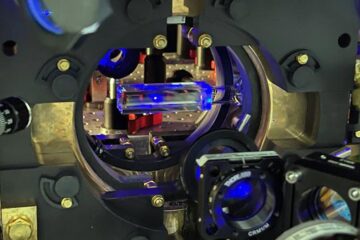Latest News

Routine Evaluation of Prostate Size Not As Effective in Cancer Screening
However the study suggests that if a man’s PSA level is rising quickly, a prostate biopsy is reasonable to determine if he has prostate cancer. These findings…

World's First Voluntary Gorilla Blood Pressure Reading
Created as a senior design project by biomedical engineering undergraduates David Sotto, Nisha Bhatia, Stephanie Drewicz and Scott Seaman, the prototype has…

Warm-blooded Dinosaurs Worked Up a Sweat
In a study published this week in the journal PLoS ONE, a team of researchers, including Herman Pontzer, Ph.D., assistant professor of anthropology in Arts &…

APS Council Overwhelmingly Rejects Proposal to Replace Society’s Current Climate Change Statement
The Council’s vote came after it received a report from a committee of eminent scientists who reviewed the existing statement in response to a petition…

NASA's Great Observatories Celebrate International Year of Astronomy
In celebration of this International Year of Astronomy, NASA is releasing images of the galactic center region as seen by its Great Observatories to more than…

Key mucosal immune response mechanism identified
The mucosal immune forms the largest part of the entire immune system and protects the body from pathogens and foreign particles by secreting the antibody…











